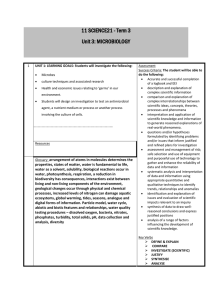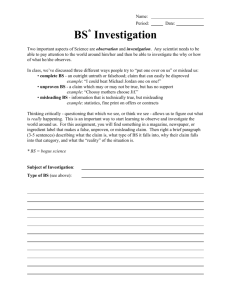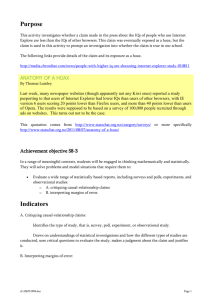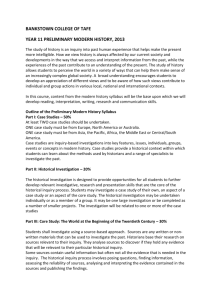Students Taking Charge - Action for Healthy Kids
advertisement
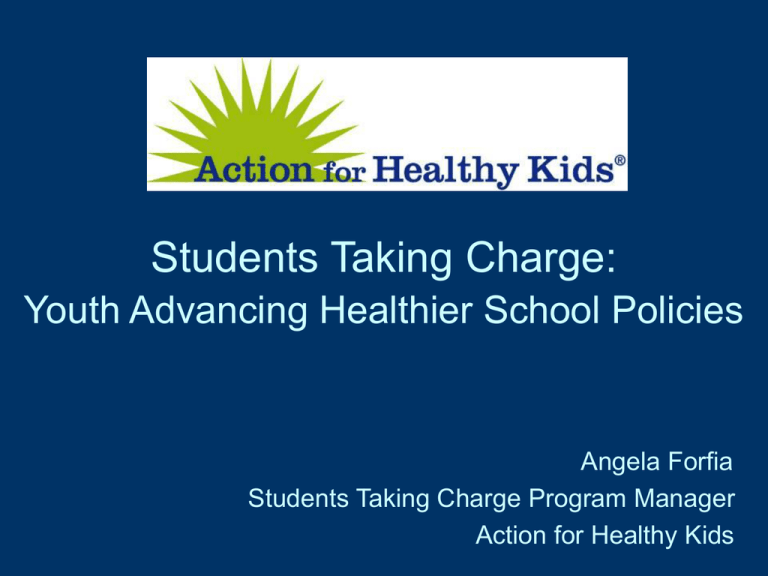
Students Taking Charge: Youth Advancing Healthier School Policies Angela Forfia Students Taking Charge Program Manager Action for Healthy Kids Progress or Promises? What’s Working for and against Healthy Schools If we fail to act, we endanger the future well-being of America’s youth, and, I dare say, of America itself. Our children deserve healthier learning environments— schools that promote lifelong habits of healthful eating and active lifestyles. Three Areas of Focus Improve children’s eating habits Three Areas of Focus Increase children’s physical activity Three Areas of Focus Educate the public about the connection between health and achievement Healthy Environment Activity Students Taking Charge! Students Taking Charge 2009-2011 Who is the audience for Students Taking Charge? • High school students • Student leaders/advocates • National Honor Society • School-based health center youth advisory council • Mikva Challenge group • Other student organizations • Middle school students What are the benefits to schools? • Develops young leaders • Youth development skills • Community service hours • Mentoring/Near peer education • Increases student support for healthy changes • Encourages students to be true partners in creating a healthy school • Healthy students learn better! What sets Students Taking Charge apart from other programs? • Focus on environmental change • Five years of program success • Youth involvement in program development from the beginning • Real high schools and real student success stories • Funding for youth-led projects at the school level Meaningful Student Involvement Student-Adult Partnerships Student-Initiated, Student-Led Adults Initiate Action and Share Decisions with Students Students Consulted by Adults Students Assigned to be Involved Tokenism Decoration Manipulation Students Taking Charge The goal of Students Taking Charge is to improve knowledge, increase self-efficacy, and promote meaningful student involvement as youth advocate for lasting changes around nutrition, physical activity, and health. Students Taking Charge • Facilitator’s Guide: Four Modules – Find Your Voice – Investigate Your School – Plan for Improvement – Mobilize for Change • Students Taking Charge Website – Project Ideas – Evaluation materials – Connectivity Facilitator’s Icons Find Your Voice Environmental change for students “Students Taking Charge provides you with a step-by-step toolkit and an interactive website to teach you how to make your school a place where it’s easy to be healthy!” Find Your Voice Key Goals • Understand what a healthy school environment means • Define and demystify advocacy • Figure out the difference between programs, policies, and practices • Analyze local wellness policies • Identify key decision makers and what matters to them • Consider obstacles to making change Make it Happen: Programs, Policies, and Practices (p.20-21) Know Your Audience: Youth in Action Investigate Your School Investigation for students “Before you can start advocating for healthy changes, you have to find out what’s going on right now.” Investigate Your School Key Goals • • • • Learn the importance of investigation Collect information about the school Develop an investigation approach Overcome barriers such as lack of administrative support • Utilize Students Taking Charge surveys • Understand the value of parents as allies • Find out about the School Health Index Investigation Dots: Youth in Action Make it Happen: Which investigation approach works for you? (p. 42-45) Consider the pros/cons of… Visual assessment Interviews with key informants Focus groups Student surveys Other surveys Whole school assessment (recommended tool: School Health Index) Plan for Improvement Plan for Improvement for students “Developing a plan of action will help you figure out what needs to be done, who will do it, when it needs to happen, and when you’re done! Plan for Improvement Key Goals • Determine specific actions to improve the school health environment • Rank each action based on feasibility matrix • Set short, mid, and long-term goals • Anticipate and overcome challenges • Tailor messaging for different audiences • Build support for policy changes • Develop an action plan and budget Mobilize for Change Mobilize for Change for students “Every movement for social change starts with the passion of one individual who inspires a small group of thoughtful and dedicated people to take action.” Mobilize for Change Key Goals • Learn practical strategies for group work • Develop powerful messages around the action plan • Create effective letters, press releases, and presentations • Recognize volunteers and supporters • Understand communication strategies and when to use them • Engage the media to tell the students’ story to the community Students Taking Charge website Tips for School Success • Follow the Facilitator’s Guide • Encourage all activities to support environmental change in the school – Policy changes can take time – Remember the 3P’s – Short/Mid/Long-term goals • Use the STC website for inspiration, troubleshooting, and to share your story • Connect with other schools in your area Students Taking Charge Success Stories Check out the ready-made projects for more ideas! Questions? Thanks for taking action for healthy kids…and youth! www.ActionForHealthyKids.org www.StudentsTakingCharge.org

